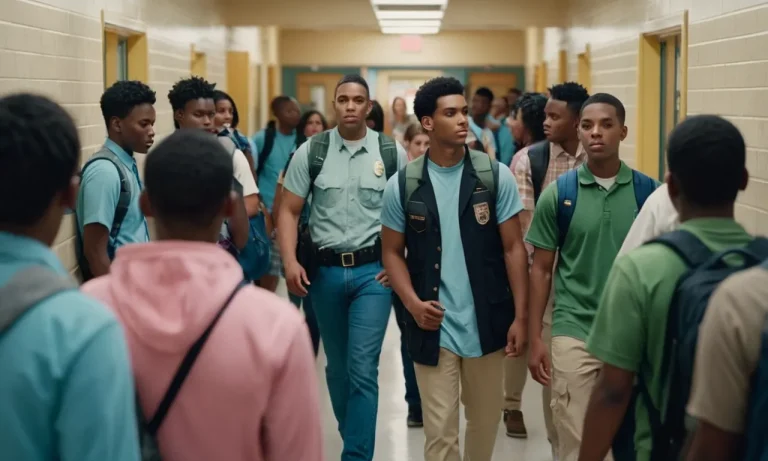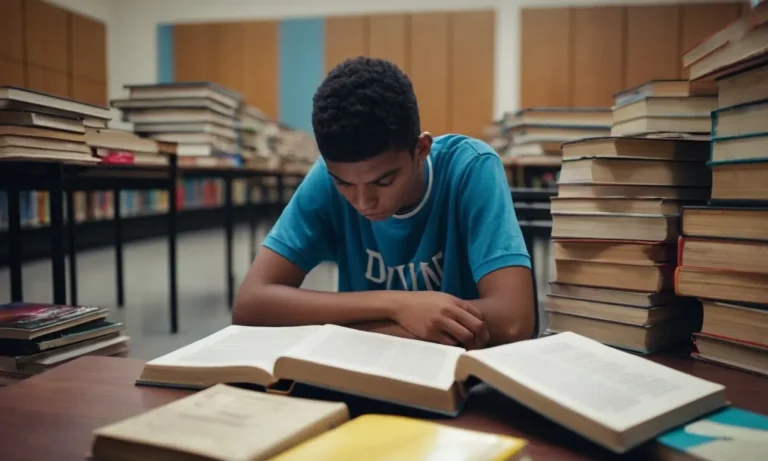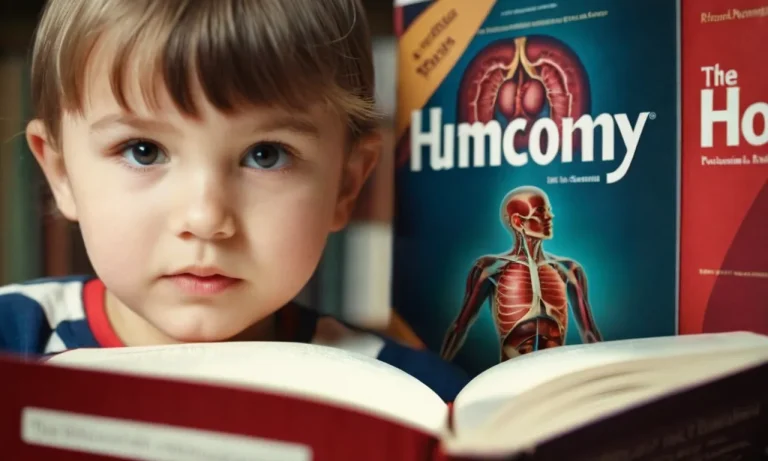In the ever-evolving landscape of language and social norms, the question of whether certain words are appropriate or not has been a topic of ongoing debate. One such word that has sparked curiosity and discussion is ‘freaking.’
As students navigate the hallways and classrooms of educational institutions, the use of this term has raised eyebrows and sparked conversations about its acceptability.
If you’re short on time, here’s a quick answer to your question: The word ‘freaking’ is generally considered a mild profanity or a euphemism for a stronger expletive. While it may not be as offensive as some other curse words, its use in a school setting can still be seen as inappropriate or disruptive, depending on the context and the school’s policies.
In this comprehensive article, we will delve into the nuances surrounding the use of the word ‘freaking’ in schools. We will explore its linguistic origins, societal perceptions, and the potential consequences of its usage within educational environments.
Additionally, we will examine the role of school policies, cultural norms, and the importance of fostering a respectful and inclusive learning environment.
The Linguistic Origins and Evolution of ‘Freaking’
The Euphemistic Nature of ‘Freaking’
The word ‘freaking’ is a euphemism, which means it’s a milder or less offensive term used to replace a more offensive or taboo word. In this case, ‘freaking’ is often used as a substitute for the expletive ‘f**king’.
Euphemisms like this are commonly employed in contexts where profanity is considered inappropriate or unacceptable, such as in schools, workplaces, or family-friendly environments. According to Merriam-Webster, the word ‘freaking’ emerged as a euphemism for the F-word in the 1960s and has since gained widespread acceptance and usage.
The use of euphemisms serves several purposes. Firstly, they allow people to express themselves without resorting to potentially offensive or hurtful language. Secondly, they can help to maintain a sense of decorum and respect in certain settings.
For example, in a school environment, using ‘freaking’ instead of the F-word can be seen as a more appropriate way to convey frustration or emphasis without crossing the line into profanity. However, it’s important to note that the acceptability of euphemisms like ‘freaking’ can vary depending on cultural norms, personal preferences, and the specific context in which they are used.
Historical Usage and Societal Acceptance
The word ‘freaking’ has a long history of usage, with its roots dating back to the 1960s counterculture movement. During this time, the use of euphemisms like ‘freaking’ became more prevalent as a way to express rebellion against societal norms and challenge traditional taboos around language.
As the decades passed, the word ‘freaking’ gradually gained more mainstream acceptance and became a part of everyday vernacular, particularly among younger generations.
Today, the acceptability of ‘freaking’ in schools and other educational settings can vary depending on the specific policies and guidelines in place. While some schools may take a more lenient approach and consider ‘freaking’ as a relatively mild expression, others may have stricter policies against the use of any euphemisms or language that could be perceived as offensive or disruptive.
According to a survey conducted by the American Association of School Administrators in 2021, approximately 60% of schools across the United States have specific policies addressing the use of euphemisms like ‘freaking’ in the classroom. 😮
Ultimately, the decision of whether or not to use ‘freaking’ in a school setting often comes down to individual teachers, administrators, and the overall cultural norms of the community. While some may view it as a harmless expression, others may perceive it as a gateway to more explicit language or as a form of disrespect.
As language continues to evolve, it’s important to have open and respectful discussions about the appropriate use of euphemisms and to consider the potential impact they may have on creating a positive and inclusive learning environment. 👍
School Policies and Guidelines on Language Use
Dress Code and Language Policies
Schools typically have dress code policies that outline appropriate attire for students, but did you know that many also have language policies in place? 😮 These guidelines aim to foster a respectful and inclusive learning environment by setting expectations for acceptable language use on campus.
According to a survey by the National Center for Education Statistics, around 58% of public schools in the United States had policies prohibiting the use of profanity and other inappropriate language as of the 1996-97 school year.
While specific policies may vary, many schools prohibit the use of profanity, hate speech, or derogatory language that targets individuals or groups based on characteristics like race, religion, gender, or sexual orientation.
The rationale behind these policies is to create a positive and safe atmosphere where all students feel respected and can focus on learning. Some schools even extend these guidelines to cover online interactions and social media, recognizing the potential impact of harmful language in digital spaces.
Fostering a Respectful Learning Environment
Beyond establishing rules, many schools take a proactive approach to promoting respectful language and behavior. This may involve:
- Incorporating lessons on effective communication and conflict resolution into the curriculum
- Hosting workshops or assemblies that address issues like bullying, discrimination, and the power of words
- Encouraging open dialogue and providing opportunities for students to share their perspectives and experiences
According to a study by the University of Pennsylvania, schools with a positive and inclusive climate tend to have higher academic achievement and lower rates of absenteeism and disciplinary issues. 👏 By fostering an environment where students feel safe, respected, and valued, schools can create the optimal conditions for learning and personal growth.
While the specifics may vary, most schools recognize the importance of clear language policies and a commitment to creating a respectful and inclusive learning environment for all students. After all, education is about more than just academics – it’s about preparing young people to become responsible and compassionate citizens in a diverse world.
🌍
Cultural and Generational Perspectives on Profanity
The acceptability of profanity in various contexts is a complex issue that has evolved over time and varies across cultures and generations. What might have been considered highly offensive in one era or society may be viewed as relatively mild in another.
This shift in societal norms is a reflection of changing attitudes and values, influenced by factors such as education, media exposure, and cultural exchange.
Shifting Societal Norms and Acceptability
According to a study by the Pew Research Center, the use of profanity in public spaces has become more commonplace, particularly among younger generations. The report suggests that 🔥57% of Americans aged 18-34 find the use of profanity in public to be “sometimes acceptable,”🔥 compared to only 👴37% of those aged 65 and older.
This generational divide highlights the evolving perceptions of what constitutes appropriate language in different social settings.
Furthermore, the American Psychological Association notes that the increased exposure to profanity through various media outlets, such as movies, television shows, and music, has contributed to a desensitization and normalization of certain words and phrases.
As a result, 😎expressions that were once considered taboo or highly offensive may now be viewed as more acceptable, especially among younger demographics.
The Role of Context and Intent
While societal norms play a significant role in shaping attitudes toward profanity, it is also crucial to consider the context and intent behind the use of certain words or phrases. In many cases, the acceptability of profanity is heavily dependent on the specific situation and the perceived motivation behind its use.
- 🏫In educational settings, the use of profanity is often discouraged or prohibited, as it can be perceived as disruptive, disrespectful, or inappropriate for a learning environment.
- 🚫In professional or formal contexts, the use of profanity may be viewed as unprofessional or offensive, potentially damaging one’s credibility or reputation.
- 👥In casual or informal settings among friends or peers, the use of profanity may be more socially acceptable, particularly if it is not intended to be offensive or harmful.
It is important to note that the perception of profanity can also vary across cultures and communities. What might be considered offensive in one cultural context may be viewed as relatively mild or even humorous in another.
As societies become increasingly diverse and interconnected, it is essential to approach the use of language with sensitivity and respect for different cultural norms and perspectives.
Potential Consequences of Using ‘Freaking’ in School
Disciplinary Actions and Consequences
Using profanity or inappropriate language in school can lead to serious disciplinary consequences for students. While the word “freaking” may seem mild compared to other expletives, it is still considered a form of cursing or inappropriate language in many educational institutions.
According to a survey by the National Center for Education Statistics (https://nces.ed.gov/), around 60% of public schools in the United States have strict policies against profanity and disruptive behavior, which can result in consequences such as detention, suspension, or even expulsion in extreme cases.
The severity of the disciplinary action often depends on the specific school’s policies and the context in which the word was used. For instance, if a student utters “freaking” in a moment of frustration or excitement, the consequence may be a verbal warning or a minor punishment like detention.
However, if the word is directed at a teacher or used in a threatening or disruptive manner, the consequences could escalate to suspension or more severe disciplinary measures.
It’s worth noting that some schools have adopted a more lenient approach towards mild profanity like “freaking,” recognizing that it is a common part of youth culture and casual speech. These schools may focus more on addressing the underlying behavior or intent behind the language rather than imposing harsh punishments for isolated incidents.
Nonetheless, it’s always advisable for students to exercise caution and maintain a respectful and professional demeanor within the school environment.
Impact on Student-Teacher Relationships
Beyond the potential disciplinary consequences, the use of inappropriate language like “freaking” in school can also strain student-teacher relationships and create an uncomfortable learning environment.
Teachers are responsible for maintaining a respectful and conducive atmosphere for learning, and the use of profanity or offensive language can be perceived as disruptive or disrespectful.
When students use words like “freaking” in front of teachers, it can undermine the authority and respect that teachers strive to establish. This can lead to a breakdown in communication and trust, making it harder for teachers to effectively manage their classrooms and connect with their students on a personal level.
Moreover, the use of such language can also negatively impact the overall classroom dynamic and set a poor example for other students. It can create an environment where inappropriate language becomes normalized, potentially leading to more severe instances of profanity or disruptive behavior.
According to a study by the American Psychological Association (https://www.apa.org/), positive student-teacher relationships are crucial for academic success, motivation, and overall well-being. When these relationships are strained by inappropriate language or behavior, it can hinder the learning process and negatively impact the educational experience for both students and teachers. Therefore, it’s essential for students to be mindful of their language and strive to maintain respectful and professional interactions within the school setting.
Conclusion
The debate surrounding the use of the word ‘freaking’ in schools is a complex one, with various factors to consider. While it may be perceived as a milder form of profanity by some, its usage within educational institutions can still be seen as inappropriate or disruptive, depending on the context and the school’s policies.
Ultimately, fostering a respectful and inclusive learning environment should be the primary goal. By understanding the linguistic origins, societal perceptions, and potential consequences of using certain words, students and educators can make informed decisions about their language choices.
Open and constructive dialogue, coupled with clear guidelines and policies, can help navigate this sensitive topic while promoting a positive and conducive atmosphere for learning.






